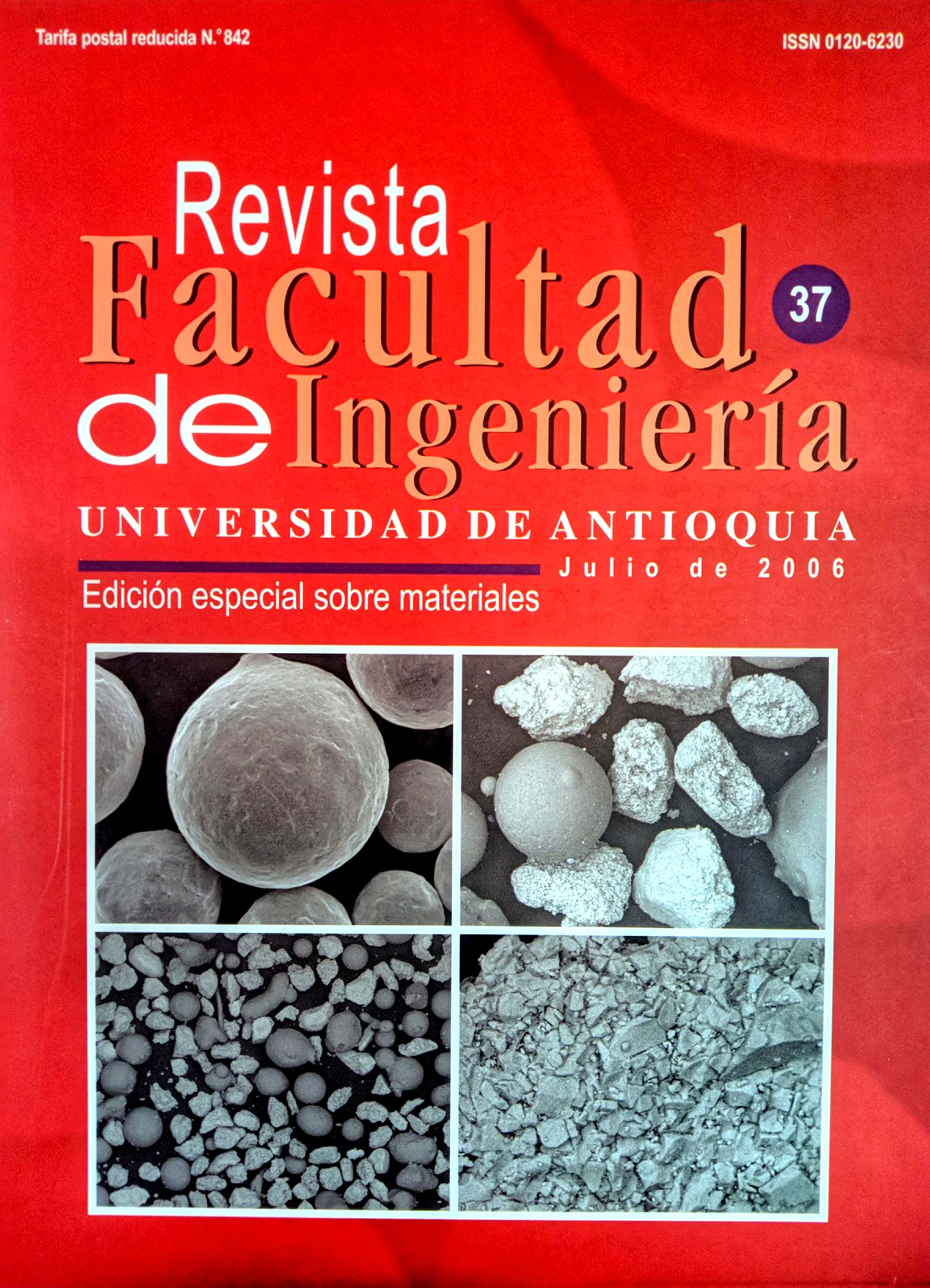Production and mechanical characterization of a reinforced polyurethane compound from castor oil and polymeric MDI using the poltrusion forming method
DOI:
https://doi.org/10.17533/udea.redin.343418Keywords:
poltrusion, polyurethane, castor oil, composite, glass fiberAbstract
Polyurethane is a compound that is produced by the reaction of a diisocyanate and a polyol. Taking advantage of the high reactivity of polymeric diphenyl-methanediisociante (MDI) urethanic groups are formed with the ricinoleic acid provided by castor oil, obtaining a polyurethane with a shore D 45 hardness. This polymer forms a reinforced compound with the type E glass fiber using the poltrusion forming method. Poltrusion is a continuous forming process that is employed in the industrial scale production of polyester resins and releases high emissions of organic volatile compounds (VOC) to the environment. In this work we propose a more efficient alternative with a renewable raw material like castor oil, minimizing VOC emissions to the environment; the interaction between polyurethane and glass fiber in the production of a composite material with a high chemical resistance and excellent mechanical properties, associated with the synergy between glass fiber and polyurethane, is also studied.
Downloads
References
J. Gómez. Introduction to composite materials. Mexico. 1.a ed. OSI Specialties. México. 1990. pp. 1-112.
O. Günter. Polyurethane handbook. Hanser Publisher. Berlín. 1993. pp. 11-669.
S. S. A. Tortorello. “Effect of structure on the thermal stability of photocurable urethane acrylate formulations”. Journal Applied Polymer Science. Vol. 43. 1991. pp. 699-707. DOI: https://doi.org/10.1002/app.1991.070430407
B. Kim, H. Paik. Modification of aqueous polyurethane dispersions via tetraphenylethane iniferters. Journal Applied Polymer Science.Vol. 73. 1999. pp. 2993-3000. DOI: https://doi.org/10.1002/(SICI)1097-4628(19990929)73:14<2993::AID-APP24>3.0.CO;2-B
F. Trevor. Pultrusión for engineers. CRC Press New York. 2000. pp. 1-336.
M. Szycher´s. Handbook of polyurethanes. CRC Press; New Cork.1999. pp.2.1-2.12. DOI: https://doi.org/10.1201/9781482273984
http://www.Groshea.com, general@groshea.com consultado 10 julio de 2005.
F. González. J. Cadavid. S. “Síntesis de poliuretano rígido a partir del poliol renovable del aceite de higuerilla y MDI polimérico”. En: III Congreso internacional de materiales simposio materia 2005. Cartagena, Colombia. Septiembre, 2005. Ponencia G-5.
http://www.connblade.com/cb/images/ConnBlade.gif consultado el 10 julio de 2005
L. George. Handbook of Fiberglass and Advanced Plastic Composites. Huntingdon New York. 1975. pp.1-152.
V. Milos. Technical Approach to Glass. Elsevier. New York. 1990. pp. 1-392.
C. M. Renaud http://www.plastunivers.com/Tecnica/Hemeroteca/ArticuloCompleto.asp?ID=8275 consultado el 15 de agosto de 2005.
Downloads
Published
How to Cite
Issue
Section
License
Revista Facultad de Ingeniería, Universidad de Antioquia is licensed under the Creative Commons Attribution BY-NC-SA 4.0 license. https://creativecommons.org/licenses/by-nc-sa/4.0/deed.en
You are free to:
Share — copy and redistribute the material in any medium or format
Adapt — remix, transform, and build upon the material
Under the following terms:
Attribution — You must give appropriate credit, provide a link to the license, and indicate if changes were made. You may do so in any reasonable manner, but not in any way that suggests the licensor endorses you or your use.
NonCommercial — You may not use the material for commercial purposes.
ShareAlike — If you remix, transform, or build upon the material, you must distribute your contributions under the same license as the original.
The material published in the journal can be distributed, copied and exhibited by third parties if the respective credits are given to the journal. No commercial benefit can be obtained and derivative works must be under the same license terms as the original work.










 Twitter
Twitter